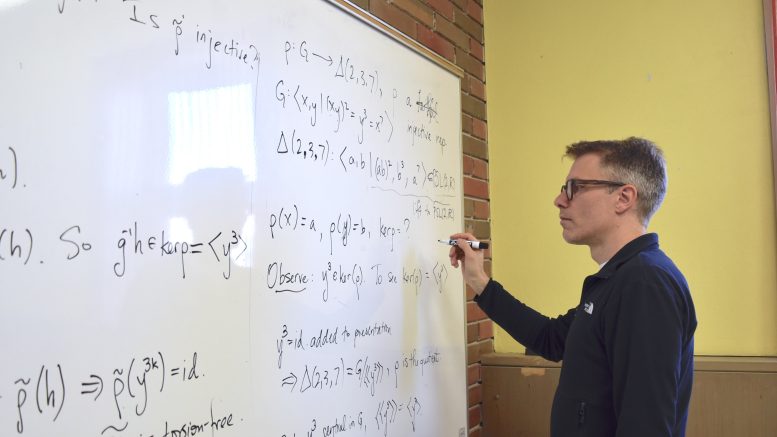Adam Clay, a professor in the department of mathematics at the U of M, studies algebra with ties to topology, the branch of math that looks at shapes and spaces.
Clay’s research centres on group theory, a field that began in the 1800s to study symmetries of objects. “If you have ever heard of a Rubik’s cube […] using groups is how you would model the movements of a Rubik’s cube mathematically,” he said. Today, group theory appears in cryptography, robotics and chemistry.
Clay extends this work by studying ordered groups. “I take groups, I add a little bit extra called an order on the group,” he said. Clay explained that he studies how the connections of topology and group theory are affected by order.
Much of his recent work has been tied to the “L-space conjecture,” a problem in low-dimensional topology. According to Clay, low dimensions — two, three and four — are surprisingly difficult to study. About 15 years ago, mathematicians observed that three seemingly unrelated properties of certain three-dimensional spaces are, in fact, equivalent. Though the connection is unexpected, evidence so far shows the three always align. “These three different values that you can calculate should end up all being equal in the end,” Clay explained.
The conjecture has held up under more than a million computer checks. Clay entered the debate because one of the three properties involves ordered groups, his specialty. “I’m trying to prove theorems and prepare results that would be useful for people who are in this field of low-dimensional topology,” he added.
Clay has since published a book, Ordered Groups and Topology, and contributed papers that confirm the conjecture in certain cases. He is now preparing a new book on circularly ordered groups, the tool researchers have realized they needed next.
“The biggest recent contributions that I’ve made are to this conjecture, and to preparing everybody to be able to use the tools from my area, which are really outside the usual toolkit that people in low-dimensional topology have,” Clay said.
His path to this work was not straightforward. During his PhD, Clay initially focused on low-dimensional topology problems directly. After a year and a half, he switched to algebra, the field he truly enjoyed. That shift led him to ordered groups, though the conjecture eventually drew him back toward topology.
Clay said that it is common in mathematics for research to switch directions when a new discovery throws a wrench in previous ideas, and he writes with the hope of making the path smoother for others. “A large part of what I’m doing is trying to prevent that experience from happening to other people,” he said. “My goal is to make things accessible to people who come after me.”
For students, he advises focusing less on grades and more on real understanding. “There are strategies for passing classes and getting good grades that don’t make a good mathematician,” he said. “Instead, focus on clear communication and really understanding what you’re doing […] Try to explain it to others, because that’s what mathematicians do.”





